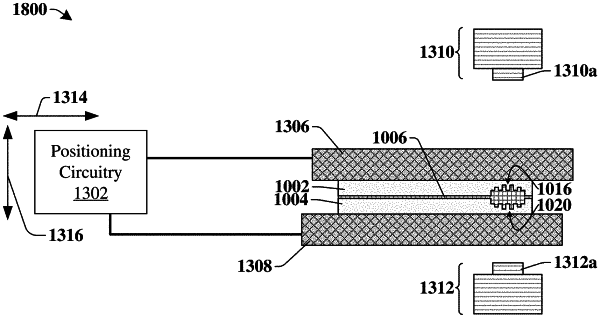| CPC H01L 23/544 (2013.01) [H01L 24/83 (2013.01); B23Q 17/22 (2013.01); H01L 21/187 (2013.01); H01L 21/681 (2013.01); H01L 2223/54426 (2013.01); H01L 2224/8313 (2013.01)] | 20 Claims |

|
1. A method for bonding a first wafer to a second wafer comprising:
loading a first wafer onto a first wafer chuck and a second wafer onto a second wafer chuck, wherein the first wafer faces the second wafer, wherein the first wafer comprises a first transparent material, and wherein the first wafer comprises a first alignment mark comprising the first transparent material;
applying a first light to the first wafer;
capturing a first image of the first wafer using a first camera while the first light is being applied to the first wafer;
analyzing the first image to identify the first alignment mark on the first wafer;
applying a second light to the second wafer;
capturing a second image of the second wafer using a second camera while the second light is being applied to the second wafer;
analyzing the second image to identify a second alignment mark on the second wafer;
moving the first wafer chuck and the second wafer chuck using positioning circuitry to align the first alignment mark on the first wafer with the second alignment mark on the second wafer; and
bonding the first wafer to the second wafer;
wherein the first alignment mark has a plurality of first surfaces and a plurality of second surfaces that are entirely recessed relative to a topmost surface of the first wafer and that face a same direction as the topmost surface, and wherein each of the second surfaces is coupled to a neighboring one of the first surfaces by a sidewall extending from that second surface to the neighboring one of the first surfaces.
|